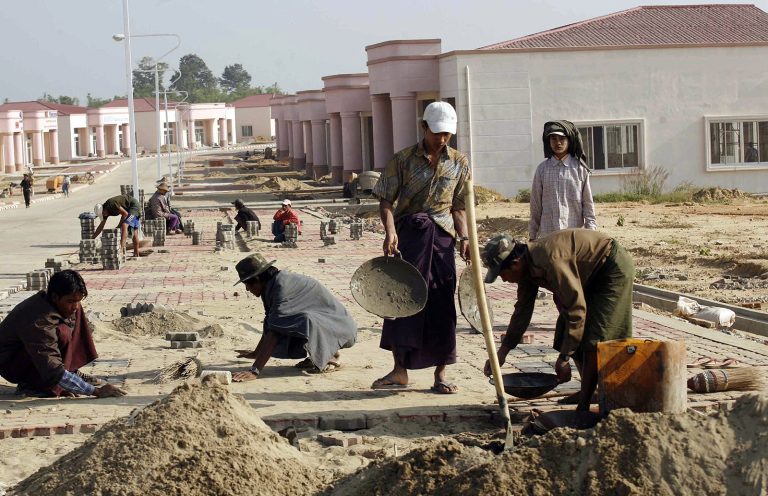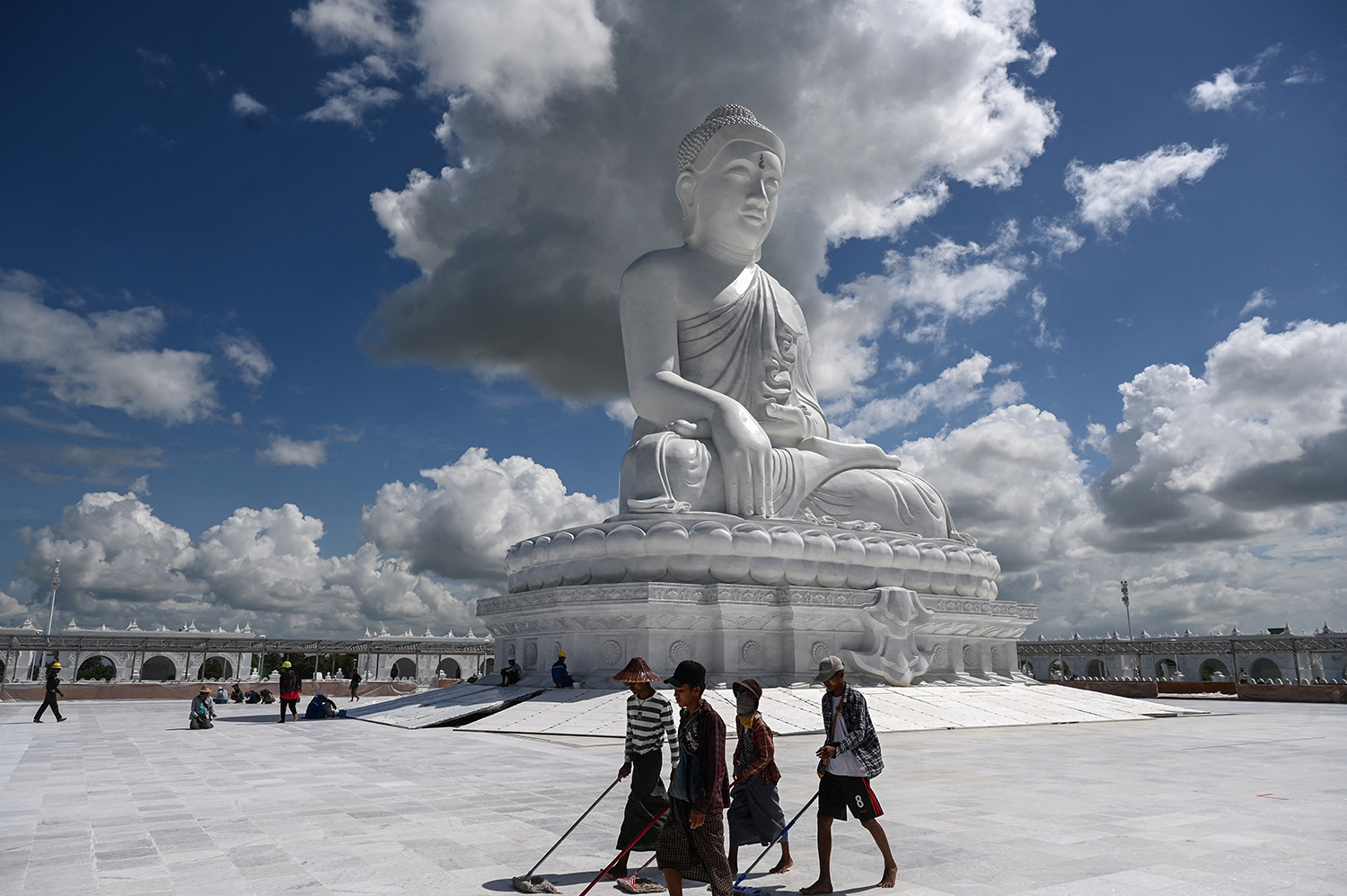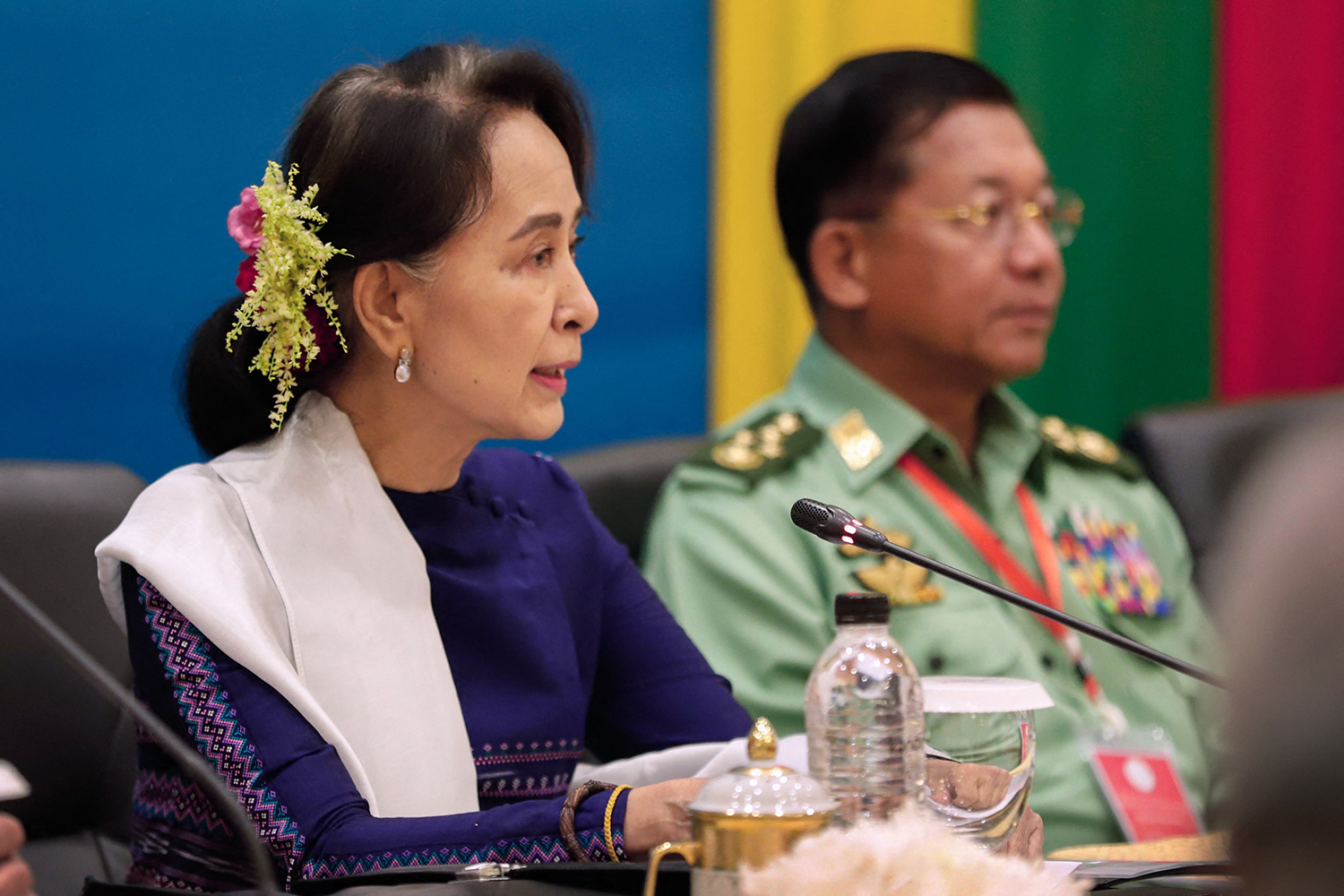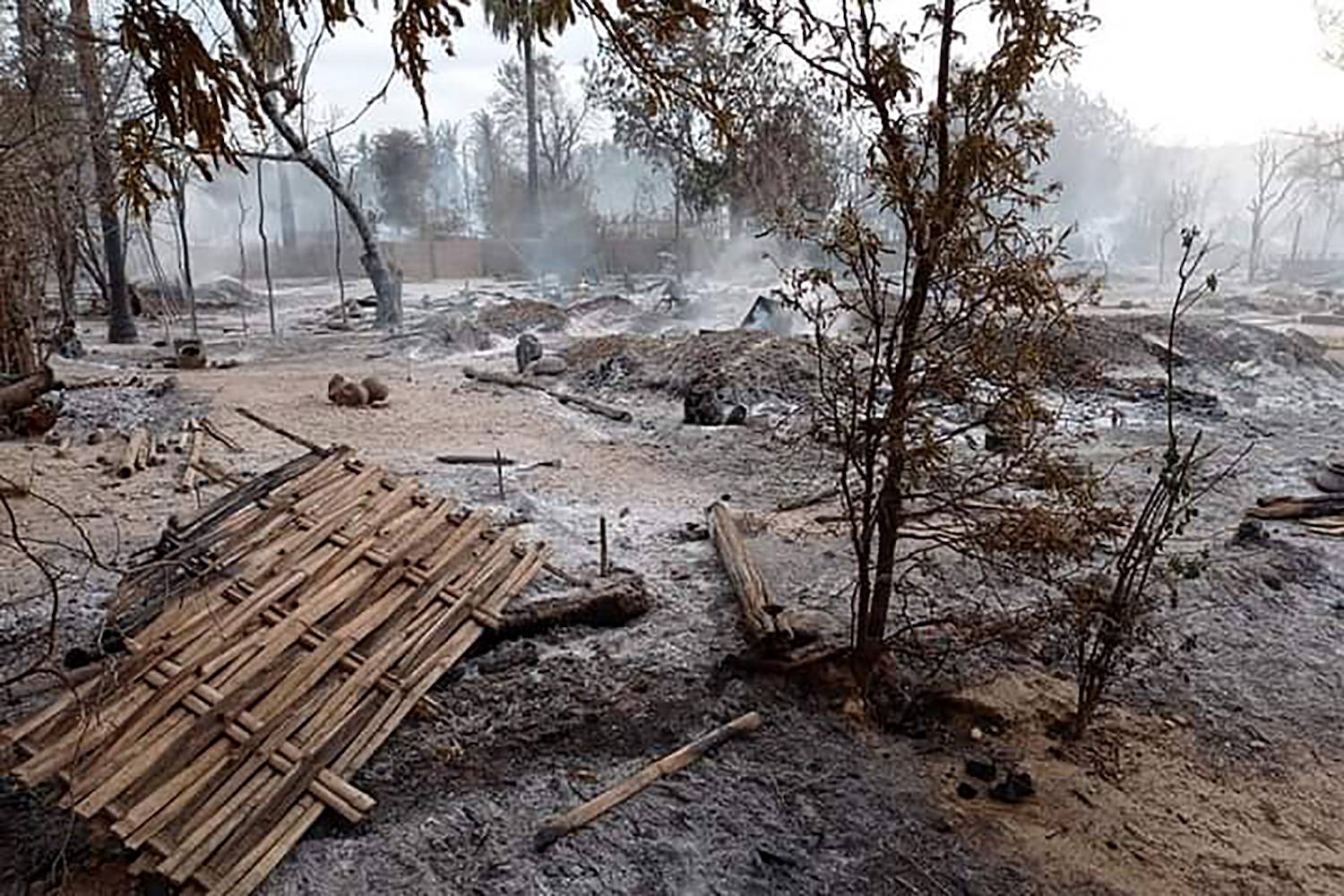The expressway linking Yangon and Mandalay via Nay Pyi Taw is known as Death Highway for good reason. Here’s some advice for drivers who don’t want to become a traffic accident statistic.
By KYAW PHONE KYAW & NYAN HLAING LYNN | FRONTIER
Mention the “highway of death” in Myanmar and everyone knows what you mean. It’s the notorious Yangon-Nay Pyi Taw-Mandalay expressway, known in Myanmar as the ahmyan lann (high speed road). Since it opened in March 2009, the expressway has claimed more than 600 lives and left more than 4,000 people injured, figures from the Highway Road Police Department show. That’s nearly two fatalities for every mile of the 366-mile expressway.
Two of the worst accidents on the concrete expressway occurred a month apart in 2014. Both involved highway buses. In April, a bus collided with a car soon after leaving Nay Pyi Taw for Yangon, leaving 12 people dead. On the same stretch of highway a month later, a bus ran off the road in heavy rain and toppled into a ravine, leaving 14 people dead.
The high death toll in two accidents so close together focused attention on the dangers of using the highway. Days after the May crash, the site of the accident was inspected by President U Thein Sein and the Minister for Construction, U Kyaw Lwin, who said the road should be widened.
Various reasons have been given for the high accident rate. Some blame deficiencies in the road’s design and construction and others say it’s because of evil spirits. Buddhists have given Dhamma sermons and splashed water on the road to bring good luck. The government has received assistance from the overseas aid organisations of the United States and Japan, USAID and JICA respectively, to make the highway safer. Researchers have studied the highway to determine how it may be improved.
Support more independent journalism like this. Sign up to be a Frontier member.
Frontier reporters have spent a lot of time travelling the highway, especially the section between Yangon and Nay Pyi Taw. Here’s their guide to using the highway and avoiding its hazards so that your travel experience is as safe as possible.
tzh_ygn-mdy_highway10.jpg
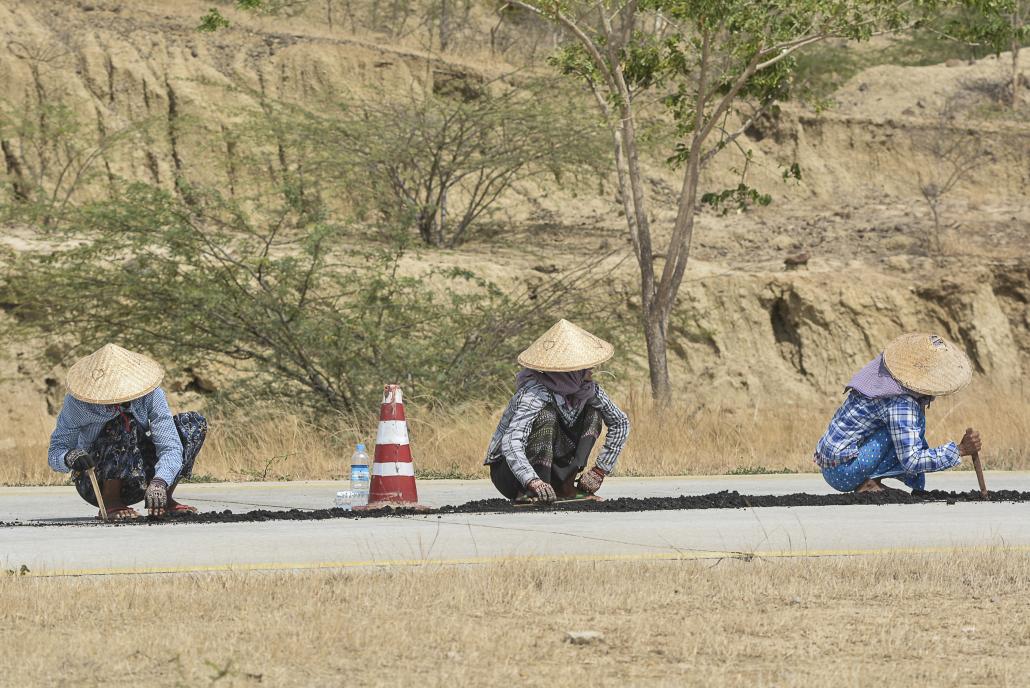
Road workers on the Yangon-Mandalay Highway. (Teza Hlaing / Frontier)
The third lanes
Avoid driving in the occasional short sections of third lane along the highway. Use them only if you need to slow down or to park. If you drive at speed in the third lane there’s a risk you will hit the roadside concrete barrier. It is not known why the third lanes were built. Frontier tried to find out by asking the chief engineer of the Ministry of Construction, Public Works, but he declined to be interviewed.
Vehicles
Highway Road Police Department figures released in mid-2015 showed that more than half of the accidents on the expressway involved light trucks and pick-ups. They are a common sight on the highway, often carrying dozens of passengers.
The second biggest group of vehicles involved in accidents are big, off-road SUVs, such as Land Cruisers and Pajeros. Because they are higher than sedans, they are prone to roll over in the event of a burst tyre, a situation which requires the driver to remain calm, slow down gradually and avoid using the brakes. Burst tyres and an inexperienced driver’s response to them are the cause of many accidents on the death highway.
Speeding
Billboards in Myanmar along the highway once issued this warning: “Don’t drive with high speed on the high-speed expressway”. People joked on social media about the safety warning because of its contradictory message. The billboards have gone and the traffic police rely on speed cameras to dissuade drivers from exceeding the limit.
It is commonly believed that the speed limit on the highway is 100 kilometres an hour. That’s wrong. Speed limits of 60km/h and 80km/h also apply to various sections of the highway but are ignored by many drivers. U Myo Myint, who has 10 years’ experience as a driver, said the most comfortable cruising speed on the highway is between 80km/h and 90km/h.
Research by Daw Saw Myat Khine, of Yangon Technological University, and Professor Daw Khin Than Yu, of Yangon Institute of Technology, found that speed was the main cause of accidents on the Yangon-Nay Pyi Taw section of the highway.
Their research paper also raised questions about the design of curves along the highway. Of the 27 curves between the commercial and national capitals, 21 were found to be poorly designed, due mainly to inadequate camber. Drivers travelling at the recommended speed needed to slow down to negotiate the poorly designed curves, the research found. It recommended that the 21 curves be regarded as “black zones” and be marked with signs warning of a high danger risk.
Ko Kyaw San Min, the Mandalay branch manager of Shwe Mandalar Highway Express tour bus company, agreed that curves lacking camber were a hazard, especially for drivers unfamiliar with the expressway.
tzh_ygn-mdy_highway15.jpg
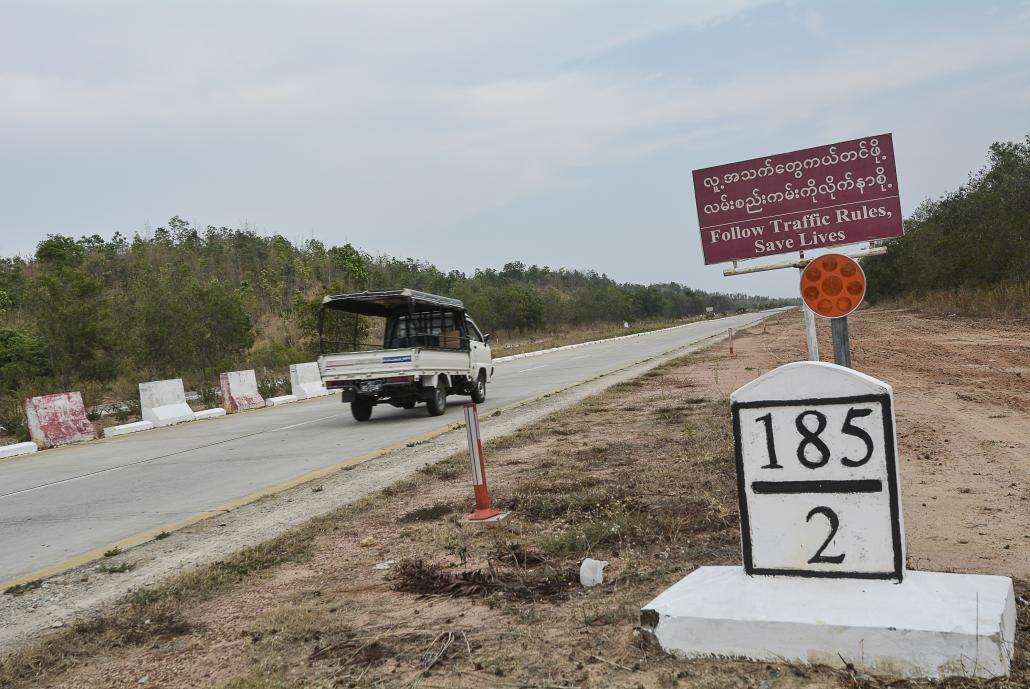
Teza Hlaing / Frontier
Tired drivers
Drivers falling asleep at the wheel is another reason for the expressway’s high accident rate, said the Highway Road Police Department. The average driving time between Yangon and Mandalay is about eight or nine hours. Police recommend that drivers be well rested when they begin their journey and that they take naps if they feel tired.
“Drivers should rest ever two or three hours because driving in air-conditioning on a straight road can make them sleepy,” said Kyaw San Min, adding that there should be more rest stops provided along the expressway.
“There are not enough rest areas and this is one reason why some drivers are reluctant to pull over and have a rest when they are sleepy,” he said. “The authorities should do something about this because drivers falling asleep is a major cause of accidents.”
The Shwe Mandalar company assigns two drivers to every trip to avoid this problem, Kyaw San Min said.
tzh_ygn-mdy_highway8.jpg
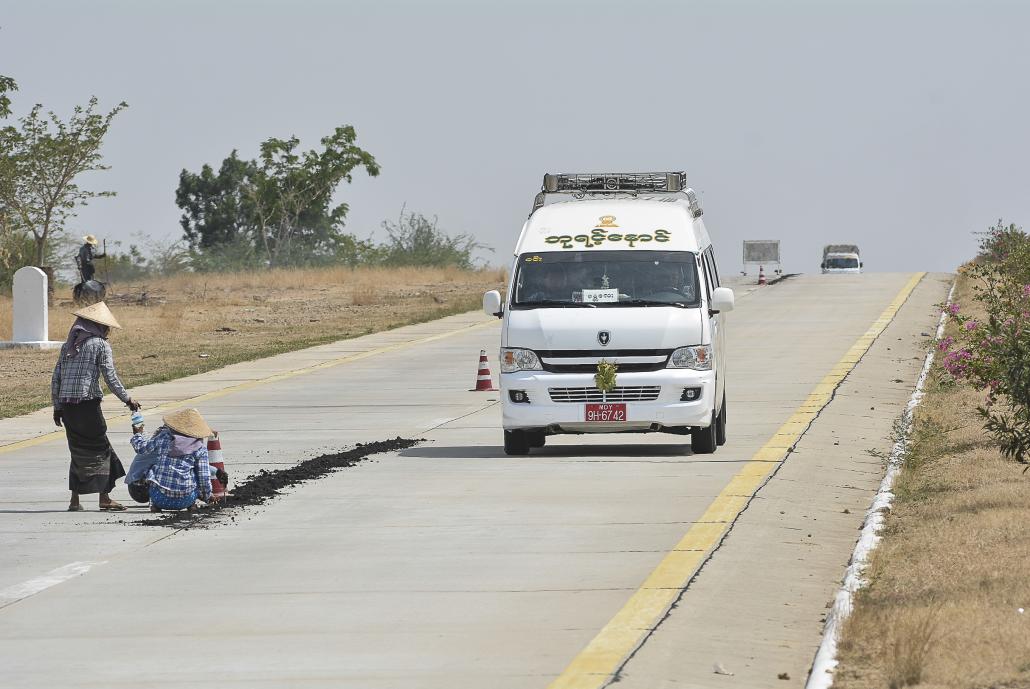
Road workers on the Yangon-Mandalay Highway. (Teza Hlaing / Frontier)
Motorbikes and animals
The Highway Roads Act makes it an offence to ride a motorbike, herd animals or walk on an expressway. Despite the law, it is common to see two or three motorbikes while travelling the expressway and they are likely to appear suddenly, sometimes on the wrong side of the road. Animals, mainly cows, buffalos and goats, are also a hazard that can appear suddenly.
Drivers who use the expressway often know they are most likely to encounter motorbikes, pedestrians and animals where there are villages near the road. Road markers indicate the presence of villages at milestones 139, 195, 229, 242, 245 and 246 and drivers in those areas need to be alert for unexpected hazards.
Frontier reporters also noticed earlier this month that more villages are being built near the highway. When village residents want to visit another village by motorbike, cart or on foot it’s impossible for them not to break the law because their only option is using the expressway.
The wrong signals
There’s a correct procedure in Myanmar for indicating when it’s safe for a driver to overtake but it’s widely ignored.
Accepted driver etiquette requires that the horn is sounded to indicate wanting to overtake a vehicle ahead and its driver will respond by flashing the left-turn indicator.
This can have two meanings: you cannot overtake because the driver ahead doesn’t want to move over or you can overtake. In practice, flashing the left-turn indicator means its safe to overtake but under the traffic law it is illegal. The traffic law says that if it’s safe to overtake, the driver of the vehicle ahead should flash the right-side indicator.
Yes, it’s confusing but the wrong signal has become accepted and that’s what most drivers use.
“I know that some of the signals we use are wrong but everyone is doing the same thing, so there’s no problem,” said U Kyaw Myo, who often uses the expressway and has been driving for six years. “But if someone doesn’t understand our driving etiquette and adheres to the traffic law it can create a big problem.”
Concrete and heat
April and May are the hottest months in Myanmar. Whatever the temperature, it always seems much hotter on the exposed, concrete expressway. Extremely high temperatures, as we have experienced recently, can damage your tyres and increase the risk of accidents.
Apart from excessive heat, another threat to tyres is broken cat’s eye reflectors, images of which have been posted on social media with comments about their potential danger.
Narrow bridge lanes
One of the safety concerns raised about the highway is its bridges, because most are narrower than the road. This can be dangerous for drivers who are unfamiliar with the expressway, especially if they are travelling parallel with another vehicle as they approach a bridge and discover their lane is suddenly narrower.
There are 72 bridges on the expressway between Yangon and Mandalay and some are a hazard for reasons other than being narrower than the road. The concrete barriers at some bridges lack reflective safety strips or are not painted white, making them hard to see at night.
Fallen cargo
Drivers need to exercise special caution if they find themselves travelling behind a pick-up or a sedan carrying a high load because it might not have been properly secured and fall off. It’s best to get ahead of such vehicles as soon as safely possible.
In April, Miss Universe for Tanintharyi Region, Ma Ei Phyo Thwe, was killed instantly in an accident on the expressway caused by cargo falling on to the road.
Safety system
A system for monitoring highway buses and trucks is being jointly implemented on the expressway by the Ministry of Construction, the Myanmar Police Force and BSMART Telematics Services (b’TS), a private company. It uses black box recording devices installed in the vehicles to monitor speed and rest breaks for drivers and can even tell if they have parked improperly. Unsafe drivers can expect a call from the police.
Since the system was launched last October, 1,218 warnings have been issued to highway bus drivers, show figures released by the Highway Road Police Department on May 5. Drivers who ignore warnings are fined.
Ko Aung Nyi Nyi Maw, the chief executive and founder of BSMART Telematics said the black boxes would be installed in all highway buses by the end of this month. He added that the Ministry of Construction would only issue highway driving permits for big trucks if black boxes had been installed.
The cost of installing the black boxes was K20,000, Aung Nyi Nyi Maw said.
Staying connected for emergencies
There are dead spots in MPT’s coverage along the expressway and travelers are advised to carry with them SIM cards from other providers to ensure that the number for expressway emergencies can always he called.
A test by Frontier found that calls to the emergency number – 1880 – were answered within 10 seconds.
Don’t drive while using your mobile phone. Pull over and stop if you need to make an emergency call.
Title photo: Teza Hlaing / Frontier



